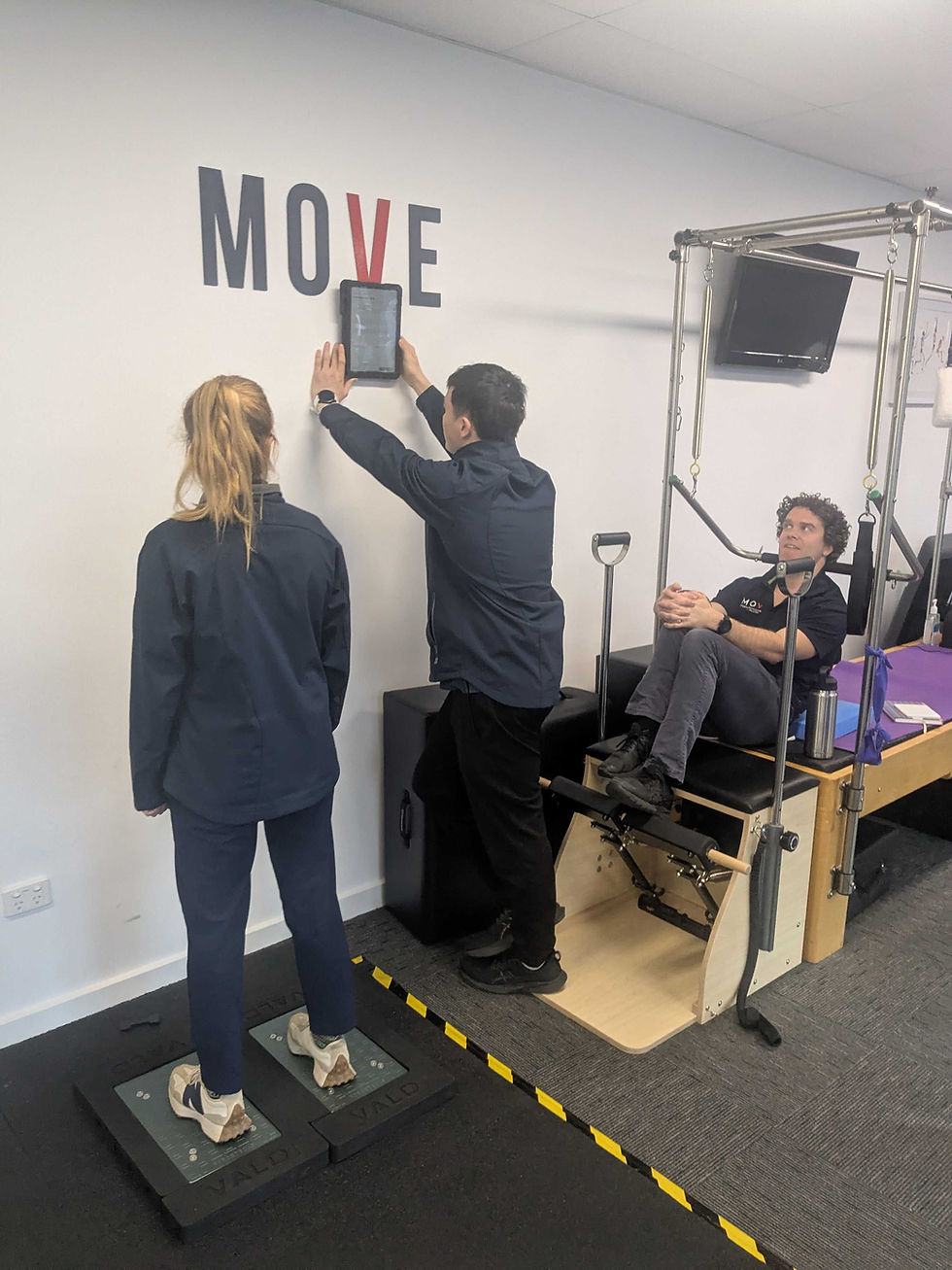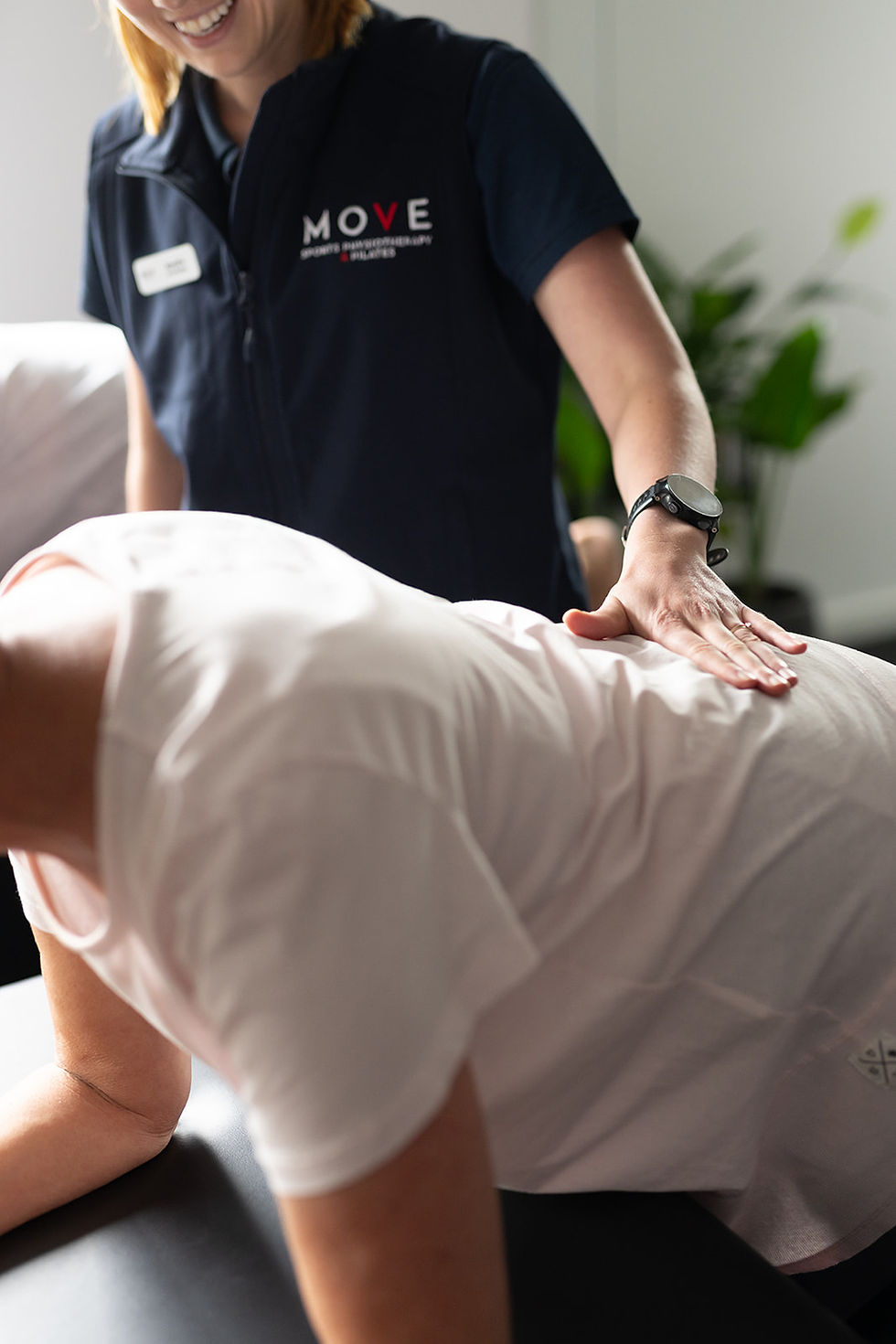Why do I stop Breathing when I use my Core during Pilates?
- Jess Mcdonald

- Aug 15, 2023
- 2 min read
Updated: Jul 7, 2024
The Link Between Your Breathe & Your Core
The diaphragm is the top part of your "core complex." Literature suggests that diaphragmatic activity can assist with stabilising the trunk, which indicates that breathing patterns that optimise diaphragmatic control are integral to the generation of core stability.

Evidence suggests that the inner unit is a dynamic system and seems to rely on integrating the pelvic floor, core muscles, diaphragm, and multifidus (back muscles) as everything works together. Holding your breath may be your body's way of getting stronger/producing more force without using your pelvic floor/ core, if you aren't used to integrating both your ab muscles and pelvic floor together.
This can happen if you are in pain, are nervous about the movement you are completing or have developed patterns of movements that include breath-holding to increase your core strength.

When completing a Physiotherapy Led Exercise session or clinical Pilates Assessment at Move Sports Physiotherapy & Pilates in Geelong, we will look at how your breathing changes as we add movement and loading (i.e., core work).

An important element of core training is learning how to brace and breathe concurrently (with the exception of performing maximal lifts). Have you noticed how weight lifters hold their breath during heavy lifts to generate more force? Breath-holding occurs as it is a strategy of your body to generate more power and strength or pressure in your middle.
During clinical pilates we are looking to INTEGRATE the breath with movement, this can take coordination, patience, and practice.
There is no "right or wrong" way to breathe during movements. We want you to encourage you to breathe and move at the same time, this aims to be a more 'functional way of moving', and take less energy. It may help pair your breathing and movement together as your limbs move away from your body, breathe in and as they come closer to your middle, breathe out. Think about a piano accordion as an example.

WHERE SHOULD I START?
Get an awareness of your breath
Lye down, turn on your tummy muscles and pelvic floor and humm
Progress to breathing in and out and holding a position
Start to add complexity and movement with your breath.
This may be bringing your legs into a tabletop position, breathing in on the way out and in on the way in.
See example workouts here. We have lots of small quick workout examples at @movesportsphysio.
Has this article left you short of breath? Have a play – can you breathe and turn your core on at the same time? If you can’t, get in touch, and we can help you BREATHE and MOVE at the same time – Wahla!
More Questions .....
References
Nelson, Nicole MS, LMT. Diaphragmatic Breathing: The Foundation of Core Stability. Strength and Conditioning Journal: October 2012 - Volume 34 - Issue 5 - p 34-40 doi: 10.1519/SSC.0b013e31826ddc07




